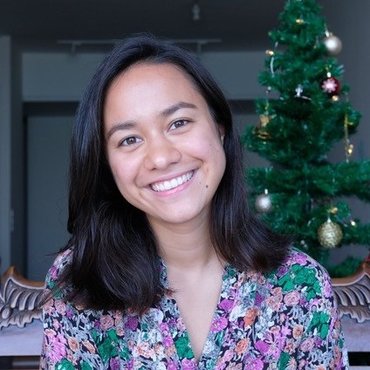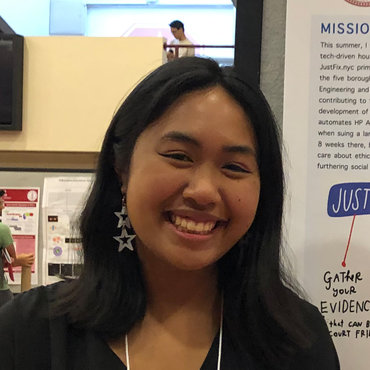
Edith Asibey, MA '97
Starting small for big change

By Erika DePalatis, '19
"How do we convince people to get involved, to take action in worthwhile causes?"
This is the question that motivates Edith Asibey, MA '97. Born in Italy and raised in Paraguay, Asibey studied biology and education at the University of São Paulo in Brazil, and later pursued a MA in media studies at Stanford University. Through these experiences, Asibey quickly discovered a passion for social justice and a desire to use her voice to uplift the voices of others.
Upon graduating from Stanford, Asibey began working for nonprofits and humanitarian groups in Latin America and around the world. As she rose to leadership roles, she would encounter the same challenge over and over again: while individuals might be quick to voice support for a cause, often the same audience would find it difficult to take practical actions to advance the cause.
How could nonprofits and humanitarian organizations move their audiences from good intentions to meaningful action, and sustain their involvement over time?
In pursuit of answers, Asibey recalled the work of BJ Fogg, MA '95, PhD '97, a fellow graduate student she had met during her time at Stanford. Fogg, a behavioral scientist leading the Stanford Behavior Design Lab, had designed a method for behavior change called Tiny Habits®. This method allows individuals to change a behavior in the long term by tapping into the power of their environment and taking baby steps.
"Upon starting to practice Tiny Habits , I saw positive changes immediately," Asibey recalls. "For example, I crafted this Tiny Habit: After I pick up my mobile for the first time in the morning, I will text a good morning message to my mother. Since I started practicing this habit, I have carried it out almost infallibly, every day for over a year and a half. What's more, if I don't do it early enough, my mom texts me first. So, she, too, developed the habit – an unexpected result!"
In Fogg's method and foundational models of Tiny Habits, Asibey saw a tool to help boost action and generosity. "If we can learn how to crack the code to develop our own healthy habits, why couldn't we use it to act more generously towards others?" Asibey wondered. After becoming a Certified Tiny Habits Coach, Asibey started a free, weeklong online program to help individuals develop their own Generous Habits. Through her firm Asibey Consulting, she also uses principles of behavioral science to help mission-driven organizations successfully take audiences from intention to action.
Asibey shares Tiny Habits with others as a way to "build motivation, confidence, and hope." In response to the uncertainty many are feeling during the COVID-19 pandemic, Asibey writes:
I am heartened by the worldwide demonstrations of people caring and mobilizing to help one another during this time. To students, especially those who have returned home or have settled somewhere safe, I encourage you to consider these three suggestions:
- Practice Tiny Habits for Generosity. While the method calls for each of us to design our own Tiny Habits, below, I share two ideas for practicing Tiny Habits for Generosity that I hope will bring positivity to your relationships with classmates, family and friends. Use these recipes "as-is," or as inspiration to craft your own!
- After I pick up my mobile phone for the first time in the day, I will text a loved one to check on them.
- After I come across the first person I don't know, I will look at them and say ‘hi' with a smile.
- Check on classmates and friends whose families are abroad or who are unable to travel home. Speaking from my own experience as an international student at Stanford, I vividly remember how hard it was to be so far away from my family and friends back home. Something that made a huge difference in making me less homesick was to have my American classmates, people like Gina Baleria, MA '97, take the time to get to know me, introduce me to family and friends, and show me how to properly order at a diner! In these complicated times, be sure to contact your fellow students who may not be in a position to return home and see how they are doing. Their families might also be in countries heavily affected by COVID-19.
- Offer help in your community. In the true spirit of Cardinal Service, your help might be needed back home or in the community where you are temporarily settled. Of course, your health and safety must always come first. Be sure to abide by all local and national public health orders while engaging in service. But if you have the means, see what you can do to help those who are most vulnerable. Here is a simple idea from Becky Wass in the UK: a #ViralKindness card to help your neighbors while staying safe. For more daily inspiration on how to help create a brighter world, subscribe to Giving Tuesday's "Daily Generosity Alert."
Visit the Haas Center for Public Service's Community Care page to discover more ideas of how to serve your community while keeping yourself and others safe during the COVID-19 outbreak.


